Table of Contents
Some bacteria make substances that other bacteria need to grow. The X factor and the V factor are two such substances. The heat-stable X-factor can be protoporphyrin IX, hemin, or other iron-containing porphyrins. It can be found in red blood cells and outside of them in the blood. The heat-sensitive V-factor may be nicotinamide adenine dinucleotide (NAD) or nicotinamide adenine dinucleotide phosphate (NADP), and it is mostly found inside red blood cells. The X and V factor test or a disc test can be used to find out if a bacterium depends on its X factor or its V factor. The results can help identify the bacteria.
Purpose of X and V factor Test
- Testing for the X and V factors allows for the discrimination of Haemophilus species. In vitro growth of Haemophilus species requires the presence of supplementary growth agents. To replicate, certain strains of Haemophilus spp. need either X factor (hemin) or V factor (nicotinamide adenine dinucleotide [NAD]), or both.
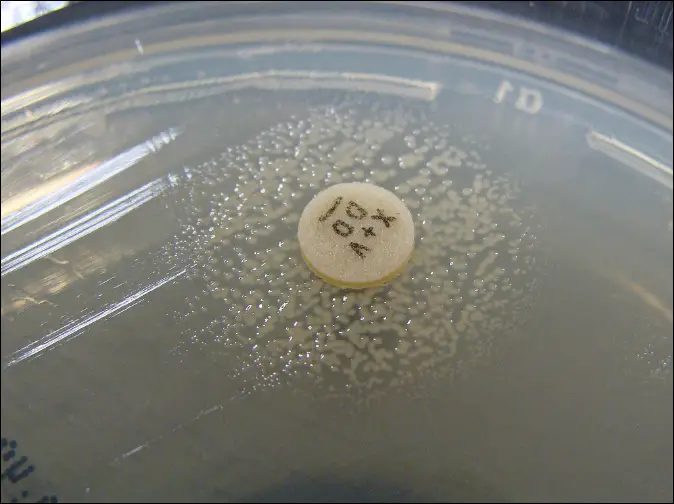
X and V factor Test Principle
- Certain organisms, such as Haemophilus species, require X factors for survival, and other organisms, such as Neisseria species, benefit from V factors for expansion.
- When used in conjunction with X factor & V factor discs, X+V factor discs are sterile filter paper discs impregnated with growth factors x (>&)> V to distinguish between Haemophilus species.
- The need for X and V growth factors in the basal medium can also be used to distinguish between different species of Bordetella and Haemophilus.
- These sterile filter paper discs (diameter: 6 mm) are impregnated with hemin (the X factor) and Coenzyme- Nicotinamide adenine dinucleotide NAD+ (the V factor).
- Only in the vicinity of X and X+V factor discs does the test organism, which needs X factor alone, thrive.
- Those that can thrive on just V factor can be found expanding near discs containing both V and X+V. If the organism needs both X and V factors to expand, it will only do so in the immediate area of the X+V factor discs. This expansionary satellite expansion is visible everywhere around the disc.
- Heart infusion agar, tryptic soy agar, Haemophilus agar, and nutrition agar are used in this test, and a lawn of the organism being examined is streaked onto the appropriate medium.
- It’s recommended to insert the impregnated discs or strips (X, V, or XV) directly on top of the confluent inoculation so that the supplementary growth factor can diffuse into the medium.
- Only in the vicinity of the disc that supplies the necessary ingredient for growth will the organisms expand.
Procedure of X and V factor Test
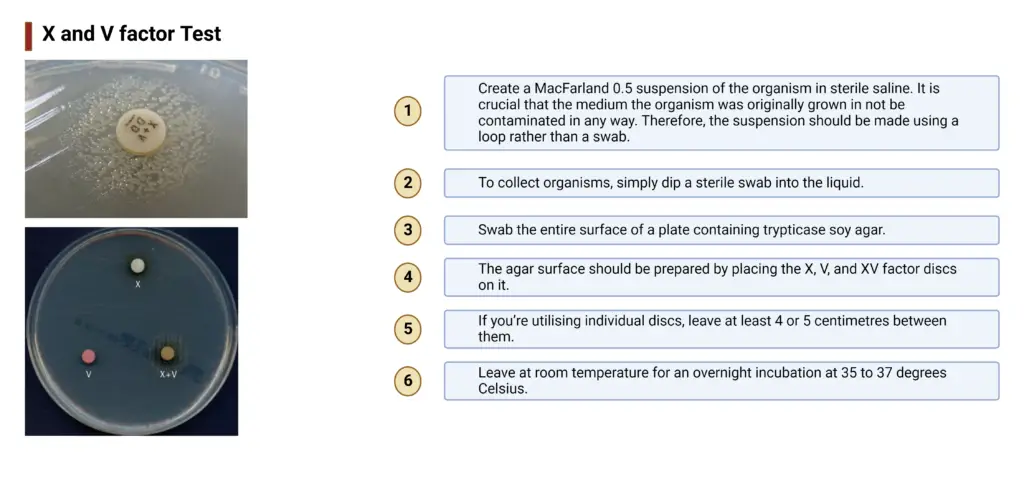
- Create a MacFarland 0.5 suspension of the organism in sterile saline. It is crucial that the medium the organism was originally grown in not be contaminated in any way. Therefore, the suspension should be made using a loop rather than a swab.
- To collect organisms, simply dip a sterile swab into the liquid.
- Swab the entire surface of a plate containing trypticase soy agar.
- The agar surface should be prepared by placing the X, V, and XV factor discs on it.
- If you’re utilising individual discs, leave at least 4 or 5 centimetres between them.
- Leave at room temperature for an overnight incubation at 35 to 37 degrees Celsius.
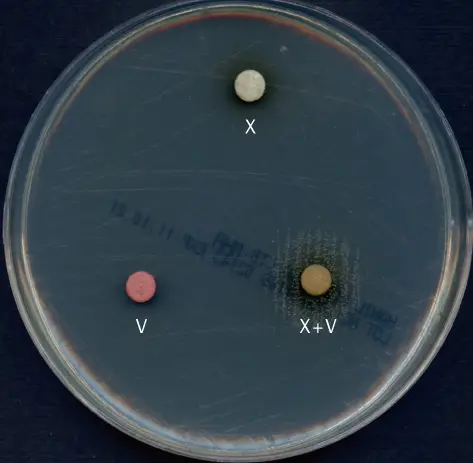
Expected Results of X and V factor Test
- X and V factor Positive Test: Growth around the XV disc only shows that both factors are needed. Growth around the V disc, no growth around the X disc, and light growth around the XV disc show that the V factor is needed.
- X and V factor Negative Test: If there is growth on the whole surface of the agar, then neither X nor V factor is needed.
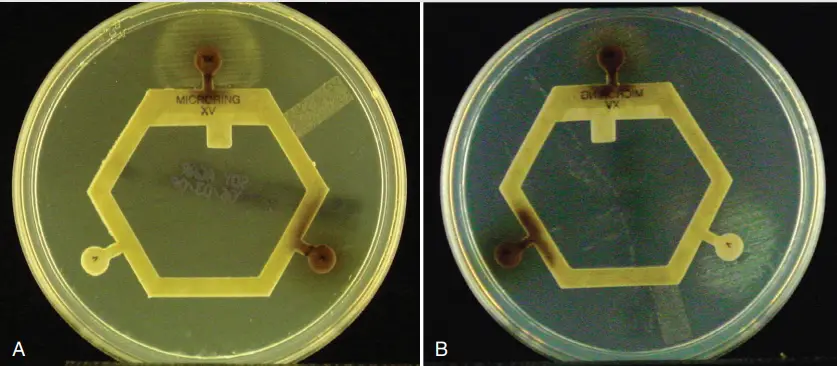
around XV disk only. B, Positive: growth around V disk.
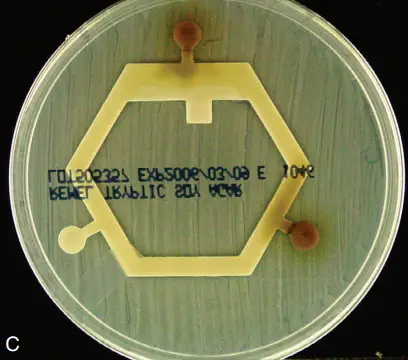
| Organism | X Factor | V Factor |
| Haemophilus influenzae | + | + |
| H. influenzae biotype aegyptius | + | + |
| H. haemolyticus | + | + |
| H. parahaemolyticus | – | + |
| H. parainfluenzae | – | + |
| H. paraphrophilus | – | + |
| H. segnis | – | + |
| H. ducreyi | + | – |
| H. aphrophilus | – | – |
H. influenzae will grow only around the XV disk (i.e., the disk containing both X and V factors).
| Growth Around | Inference | |||
| X disk | V disk | XV disk | Entire Agar surface | |
| No | No | Yes | No | Requirement for both X and V factor |
| No | Yes | Yes | No | Requirement for V factor |
| Yes | Yes | Yes | Yes | No requirement for either X or V factor |
Quality Control
- Positive: Haemophilus influenzae will have a halo of growth around the XV disc, but the rest of the agar surface will not have any growth. Around the XV and V discs, Haemophilus parainfluenzae will show a halo of growth.
- Negative: Haemophilus aphrophilus will cover the whole plate with its growth. Factors X, V, and XV are not needed for growth.
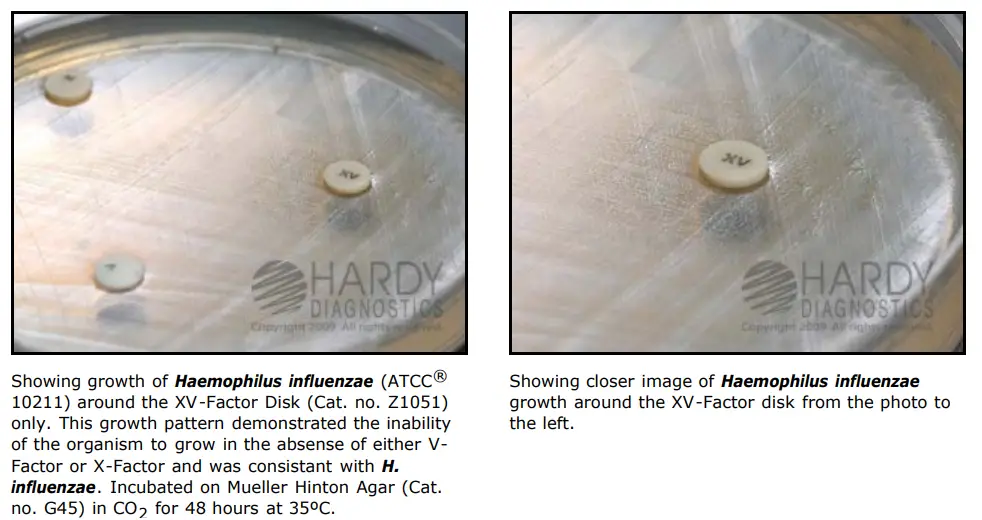
Limitations of X and V Factor Test
- When putting samples on culture media, it is important to be careful to avoid nutrient carryover.
- It is not recommended that this procedure be the only way to tell which species you are because Haemophilus has similar needs for growth factors.
- For full identification, it is suggested that biochemical, immunological, molecular, or mass spectrometry tests be done on colonies from pure culture. Because the growth factors that different Haemophilus species need are similar, this method should not be used as the only way to tell different species apart. When putting samples on culture media, it’s important to be careful to avoid nutrient carryover.
References
- Tille P.M (2014)Bailey and Scott’s diagnostic microbiology, Thirteen edition, Mosby, Inc., an affiliate of Elsevier Inc., 3251 Riverport Lane, St. Louis, Missouri 63043
- Musher DM. Haemophilus Species. In: Baron S, editor. Medical Microbiology. 4th edition. Galveston (TX): University of Texas Medical Branch at Galveston; 1996. Chapter 30. Available from: https://www.ncbi.nlm.nih.gov/books/NBK8458/
- https://assets.publishing.service.gov.uk/government/uploads/system/uploads/attachment_data/file/800302/TP_38i4.pdf
- http://www.vetbact.org/?displayextinfo=119
- https://himedialabs.com/TD/DD022.pdf
- https://bioactiva.com/pub/media/sebwite/productdownloads//x/v/xv-factor.pdf
- https://www.medical-labs.net/x-and-v-factor-disks-for-the-differentiation-of-haemophilus-species-2649/
- https://www.gov.uk/government/publications/smi-tp-38-x-and-v-factor-test
